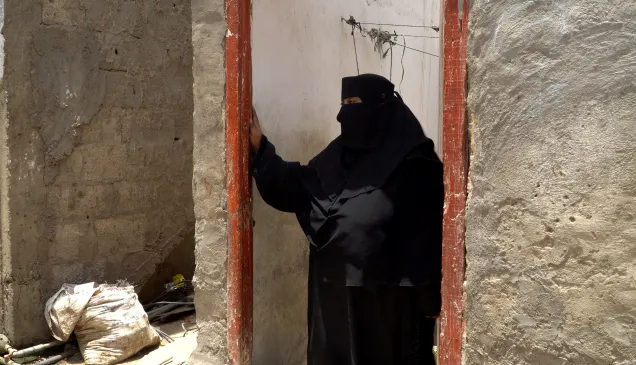Crisis in Yemen: tipping point for international humanitarian action?

Article by Yves Daccord, director-general of the ICRC, published on Alertnet - Thomson Reuters Foundation
Even before the intensification of the Yemen conflict in recent weeks created a new humanitarian calamity of major proportions, the international humanitarian sector was practically at breaking point. Never before have there been humanitarian needs on such an epic scale in so many concurrent crises around the world. And never before has the gap between those needs and the ability of international humanitarian actors to address them appeared greater than it does now.
With a solution to the fighting in Syria still elusive, the humanitarian crisis there continues to be the world's biggest, affecting many millions of people inside Syria and throughout the region. The resources required to even try to address this crisis are massive – the USD 3.8 billion pledged by donors in Kuwait in March was still less than half of what the UN alone requested for this year to cope with the ever-growing needs. At the same time, Afghanistan, South Sudan, the Central African Republic, Somalia and the Democratic Republic of Congo continue to be mired in protracted armed conflicts, causing immeasurable suffering for entire populations. The humanitarian situation in eastern Ukraine is unremittingly dire. Iraq and, increasingly, Libya are bearing the human cost of intractable violence. The drowning of many hundreds of migrants attempting to reach Europe from Libya in recent weeks was a bleak reminder of the desperate situation of untold numbers of men, women and children affected by crisis.
In fragile countries still recovering from years of armed conflict – where governance remains a challenge, and the economy and infrastructure are inherently weak – poor and vulnerable people are particularly susceptible to acute shocks, such as natural disasters. The double earthquake in Nepal in April-May is a clear example, creating a major humanitarian crisis and setting back the country's post-conflict development by years.
Inadequate response
On top of all that, the humanitarian situation in Yemen after many weeks of intense fighting and widespread air strikes is now catastrophic. The death toll has been rising by the day, as has the number of wounded. Hospitals and clinics are running low on vital medical supplies and equipment. Other essential commodities – water, food, fuel – are also in dangerously short supply in many parts of the country. The basic means for survival are running out for people already struggling to cope with the effects of recurrent upheaval, drought and chronic impoverishment.
Yet the overall humanitarian response, so far, has been woefully inadequate. Getting life-saving humanitarian assistance into the country – and moreover distributing to the people who need it most – has been hampered by the ongoing fighting and insecurity, as well as by administrative obstacles. The rules of international humanitarian law – requiring military forces and armed groups to facilitate the delivery of humanitarian relief supplies and to respect medical neutrality so that all those needing medical treatment may receive it – are, sadly, frequently ignored.
Another complicating factor is that the political, military and humanitarian agendas of the key international players in Yemen are not always easy to distinguish, at least in the public perception. Counter-terrorism strategies, air strikes and a UN arms embargo against armed opposition groups may ultimately hinder impartial humanitarian access to people on both sides of a conflict, not just for UN agencies and their implementing partners, but for others too.
Delegation to local actors
But there are other, largely self-imposed, reasons why very few humanitarian organisations have been able to operate effectively in Yemen and reach people in need. Funding constraints may be one factor, but by no means the only one. A key factor is that humanitarian agencies are increasingly delegating their response - and the risk that goes with it - to local implementers, retaining little or no control over how and where aid is distributed and no proximity to the people they are trying to help. This risks jeopardising both the impartiality and the relevance of humanitarian response, especially where any credible perspective of the real needs and resilience of affected communities is lost. The rhetoric of principled humanitarian action all too often fails to translate into a meaningful response on the ground.
Of course, different types of humanitarian response may be appropriate in particular settings, depending on the nature of the crisis. In post-earthquake Nepal, for example, the international humanitarian response has been largely collaborative, in support of domestic response capacities. While the ICRC has been providing some direct emergency assistance and working on the restoration of family links, it is largely supporting the action of the Nepal Red Cross Society (itself an auxiliary of the public authorities) and of the International Federation of Red Cross/Red Crescent Societies.
However, in constrained and complex situations of armed conflict, where the authorities are not willing or able to protect or assist people in need, a direct and radically principled response is invaluable. For the ICRC – and others of the 'Dunantist' humanitarian tradition, such as Médécins Sans Frontières (MSF) – this means an approach that demonstrates the value and practical application of the fundamental principles of impartiality, neutrality and independence in a number of ways. It must be needs-based, have close physical proximity to the beneficiaries, and entail engagement with all stakeholders – thereby gaining the widest possible acceptance and respect, and through this, the widest possible humanitarian access to people in need of protection and assistance.
Close proximity needed
Naturally, with increasing numbers of civilian and military actors engaged in the business of humanitarian relief, all with their own mandates and ways of working, this approach is by no means the only one or necessarily the right one for everyone. It is certainly not immune to security risks and access constraints. And it is facing more and more challenges – from non-western donors and recipient States, emerging non-State groups, and most especially from the beneficiaries of humanitarian action themselves.
As the people and communities affected by crisis become better informed, connected and empowered through easy, real-time access to technology and information, they will choose from increasingly diverse sources of aid, imposing their own terms and conditions. At the same time, they will become attractive targets for new actors who will offer their services based on sound business models and risk benefit analysis – at least in "straightforward" crises where they are easily reachable.
Yet in a situation such as that in Yemen right now – highly complex and highly risky, where access is a prevailing challenge – it is clear that few international humanitarian actors are able or willing to go where the needs are greatest. And despite the enormous pressures of the fast-changing humanitarian landscape, it is precisely those kinds of situations where close proximity is more crucial than ever in alleviating the suffering of those most affected, on both sides of frontlines; where the human factor is the most indispensable feature of humanitarian response.



